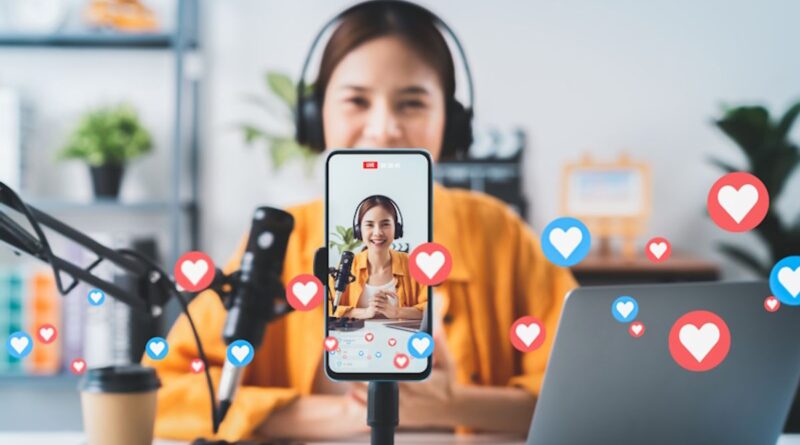Assessing the effectiveness of influencer marketing in travel
[ad_1]
The videos and images seem to be everywhere.
A young woman looks out over sparkling blue seas from a cruise cabin balcony in an Instagram Reel. A man gives a 30-second tour of a five-star hotel room set to trendy sound on TikTok. On Lemon8, a faceless-carousel of Caribbean images provides a full itinerary of luxe options.
It all looks pretty spectacular, doesn’t it? Well, travel brands are banking on it.
Windstar Cruises is the latest company to bolster its influencer marketing strategy, recently announcing a partnership with Jerne, which helps to facilitate connections with influencers and was among PhocusWire’s Hot 25 Travel Startups for 2024.
Subscribe to our newsletter below
In doing so, Windstar is taking something of a leap of faith.
Measuring the return on investment from influencer marketing is challenging, and PhocusWright research shows 55% of travelers favor recommendations from loved ones when seeking inspiration on social media about where to go.
Yet some experts say influencer marketing is an investment travel companies would be wise to consider. The content creators who amass large followings often build trust that’s akin to friendship — at least on the level of recommendations — plus they hold special appeal to younger travelers and get to places the travelers’ friends and families may not, opening audiences to new venues.
Travel is such a “visual purchasing journey” that influencer marketing can have a big impact, said Brennen Bliss, CEO of travel-focused digital marketing agency Propellic. But his assessment came with a caveat: The reach of influencer marketing can’t be quantified the way, say, a digital advertisement on Google can.
“It just has to be treated very differently [from] product performance marketing,” Bliss said. “It’s an investment in an attempt to attract people, [so] it’s not like a mathematical type of investment.”
Influencer marketing as part of “full funnel” approach
While the marketing influencers do on social media is digital by its nature, it has more in common with traditional marketing – think billboards or flashy magazine spreads – than modern digital ads in which clicks, conversions and other calls to action can be tallied in real time.
One approach builds awareness, while the other is more direct about seeking a sale — yet both can be important to a successful campaign.
Last year’s Phocuswright report notes that social media is helpful primarily in the “passive” planning that takes place when travelers are deciding where to go but before they are ready to book.
It just has to be treated very differently [from] product performance marketing. … It’s an investment in an attempt to attract people, whereas it’s not like a mathematical type of investment.
Brennen Bliss – Propellic
But “passive” doesn’t translate to “no impact.” And it’s particularly important when paired with other marketing efforts, Bliss said.
“An influencer campaign is a long-term investment,” he said, offering a firsthand example of his recent honeymoon to the Maldives, with a stay at a St. Regis Resort. “The reason I did that was because of … social media posts. It looked incredible.”
For a luxury line like Windstar – where smaller ships carry up to about 300 passengers, a tenth or less than some major cruise lines — generating that kind of exposure can hold extra value. Janet Bava, chief commercial officer at Windstar Cruises, believes that successful marketing requires a “full funnel” approach.
Influencer marketing is built on trust — the same factor that validates a loved one’s recommendation, Bava pointed out. The awareness raised by the influencer can initiate a cycle that ends with a sale.
“You want to drive the consumer … to learn more about the product or service or the travel experience that they’re promoting,” Bava said. “And so creating that full funnel is going to be incredibly important for us brands to ensure that those leads are generated.”
Whether to use influencer marketing as part of a brand’s strategy comes down to the brand’s goals, according to Phocuswright senior analyst Madeline List.
If brands are looking for quick conversions, influencer campaigns may not be a good choice, she explained. However, many younger travelers who spend more time on social media haven’t yet hit their peak spending power.
“Brands that play the ‘long game’ of spreading awareness early on may find more success in establishing longer-term interest and loyalty when these users reach their earning potentials,” List said.
How companies weigh influencer marketing
While it’s “incredibly hard, if not impossible to track” influencer marketing ROI, Bliss said, brands and influencer marketing professionals are doing their best to measure its worth. That includes Windstar.
“With my limited marketing budget, I need to measure and ensure that every investment that I make returns a booking,” Bava said. “There [are] different measurements and [key performance indicators] — from awareness to number of leads generated, number of days that are converted through that full funnel — that’s how I measure ROI … it has to bring revenue.”
While she said Windstar has seen results from influencer relationships, she called it a “gray area” and said the cruise line has tasked Jerne to help them define ROI.
Jerne has worked with Marriott, IHG, Hyatt, Accor and Hilton properties, along with Virgin Voyages and other brands, yet CEO Tim Morgan said his company is operating in a space he still considers to be “quite nascent.” As it’s grown, Jerne has looked to more established industries and segments’ use of influencer marketing.
“There’s some really interesting metrics and studies from major companies out there around those areas that we pored over to … take best practices from,” Morgan said.
The key metrics Morgan cited include:
- Earned media value: Dollars generated from social media, traditional media and third-party sites.
- Content creation value: The cost a travel company would pay for a third-party content creation services as opposed to receiving content creation in exchange for a hosted experience.
- Affiliate revenue: Revenue resulting from bookings and sales made by creators’ followers that can be tracked with a unique URL.
- Hosting cost recovery: Revenue a travel provider might receive from a creator paying a discounted rate as opposed to receiving a fully-hosted experience.
- Hosting cost: The provider’s net cost of hosting a creator.
But compared with other industries, he added, travel influencer marketing ROI is a “unique beast.”
[ad_2]
Source link



